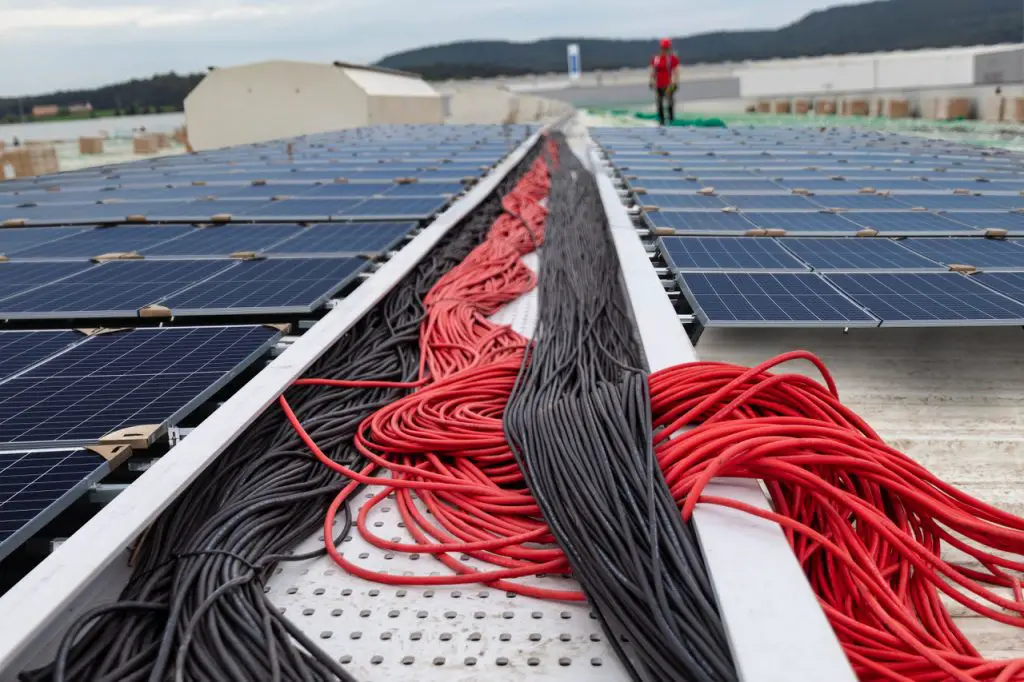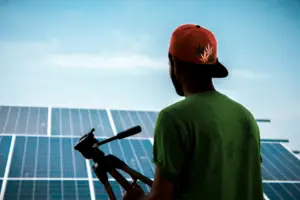Designers and contractors typically protect electrical cables and wiring systems in Solar PV installations using various methods.
One such method is using conduits, which are hard, durable protective tubing that covers and protects wires and cables used in solar power applications.
Conduits are necessary to protect the wires from hazards such as atmospheric or physical damage over the lifetime of the PV installation.
Without a conduit, outdoor wires can become wet and eventually corrode, causing extensive and expensive damage to the PV system.
To correctly size and select the appropriate conduit material, many factors must be considered, such as code, job, and customer-specific requirements.
During the conduit installation process, the wire is pulled through the conduit tubing and typically passed through walls, under driveways, secured to the exterior, and even to the interior of a building.
It is essential to install it in a way that remains protected from any external hazard and does not negatively impact the aesthetics of the building.
Risk of Installing Solar Cable Without Conduit
Solar PV installations require electrical wires to be installed from the panels to the inverter and then to the point of interconnection with the utility grid.
While designing and installing these electrical systems, designers and contractors have many things to consider, including how to protect the electrical cables and wiring systems.
One option is to use a conduit to protect the cables and wires, which can have several benefits.
Risk Of Damage Due To External Hazards
The electrical wires in a solar PV installation need protection against hazards over the system’s lifetime.
If there is no conduit to protect the outdoor wires, they could get wet, corrode, and ultimately lead to extensive and expensive damage to the PV system.
Code And Customer Specific Requirements
There are many factors to consider when sizing and selecting the conduit material, including code, job, and customer-specific requirements.
It is important to make the right selection to ensure the safety and reliability of solar PV installation.
Installation Challenges
A certain level of expertise and skill is required to properly install conduits for solar cables.
This involves pulling the wire through the conduit tubing and routing it through various areas such as walls, driveways, and the exterior and interior of a building.
It must be installed or placed so that it would remain protected from any external hazard while also decreasing the aesthetics of the building.
Benefits Of Installing Solar Cables In Conduit
Protection Against Physical Damage
Installing solar cable in conduit provides physical protection to the cables against accidental impacts or other forms of physical damage.
The conduit prevents external objects, such as rocks, falling branches, or animals, from damaging the cables.
Protection Against Environmental Damage
Exposure to harsh weather conditions can damage solar cables.
When installed in a conduit, the cables are protected against extreme temperatures, moisture, UV radiation, and other weather elements that can cause them to deteriorate over time.
Fire Safety
Conduit provides fire protection to solar cables.
If a fire breaks out in a building, the conduit will help contain the flames, preventing them from spreading to the cables and causing a short circuit that could further escalate the situation.
Compliance With Building Codes
Most building codes require conduit installation for electrical cables, including solar cables. Installing solar cables in a conduit ensures compliance with building codes and safety standards, which helps to prevent legal and safety issues down the road.
Easy Maintenance
Solar cables installed in a conduit are easier to maintain than those left exposed. If there is an issue with the cables, locating and accessing them for repairs or maintenance is easier.
Aesthetics
Installing solar cables in a conduit can also improve the aesthetics of a building or solar farm. The conduit can be painted to match the colour of the building or surrounding landscape, which can improve the overall appearance of the installation.
Longevity
Cables installed in the conduit will likely last longer because they are better protected from physical and environmental damage.
A longer lifespan means less maintenance and replacement costs over time.
Types Of Conduits Used For Installing Solar Cables
There are several types of conduits that can be used for installing solar cables. Here are some of the most common types:
Pvc Conduit
PVC conduit is a lightweight and inexpensive option for protecting solar cables. It is easy to install and resistant to moisture and chemicals.
Metal Conduit
Metal conduits are more durable than PVC and provide better protection against physical damage.
It can be made of steel, aluminium or copper and is often used in commercial installations.
Liquid-Tight Conduit
Liquid-tight conduit is a flexible option ideal for solar cable installations where the conduit needs to be bent or curved.
It is often used in outdoor installations where the conduit must resist moisture and weather conditions.
Rigid Conduit
A rigid conduit is a heavy-duty option that protects against physical damage most. It is often used in industrial installations where the conduit must resist harsh environmental conditions.
Flexible Conduit
Flexible conduit is a lightweight and flexible option ideal for installations where the conduit needs to be bent or curved.
It is often used in residential installations where aesthetics is a concern.
Is PVC Conduit Suitable For Use In Solar Installations?
When it comes to using conduits for solar installations, it is important to choose the right type of conduit material to ensure long-lasting protection for the wires and cables.
While PVC conduit is a cheaper option for outdoor use, it is not recommended for wire runs inside a home or office, according to the National Electrical Code (NEC).
The National Electrical Code (NEC) mandates the use of metallic conduits for wire runs inside a building.
PVC conduit is also known to degrade faster over time than metal conduit, making it a less durable option in the long run.
Electrical Metal Tubing (EMT) is considered the best choice for most home solar PV installations as it is strong, durable, and easy to install.
How Can I Hide Solar Conduit?
There are various methods available to hide solar conduits.
One of these options is to route the conduits through your attic and along the side of your house, which may cost more but can reduce the visibility of the conduits.
Another method is to conceal them entirely by running them through the walls, which requires additional expertise during installation and more expense.
This approach may lead to a more aesthetically pleasing solar installation system.
By concealing the conduits, you can achieve a cleaner and more streamlined appearance for your solar power system.








